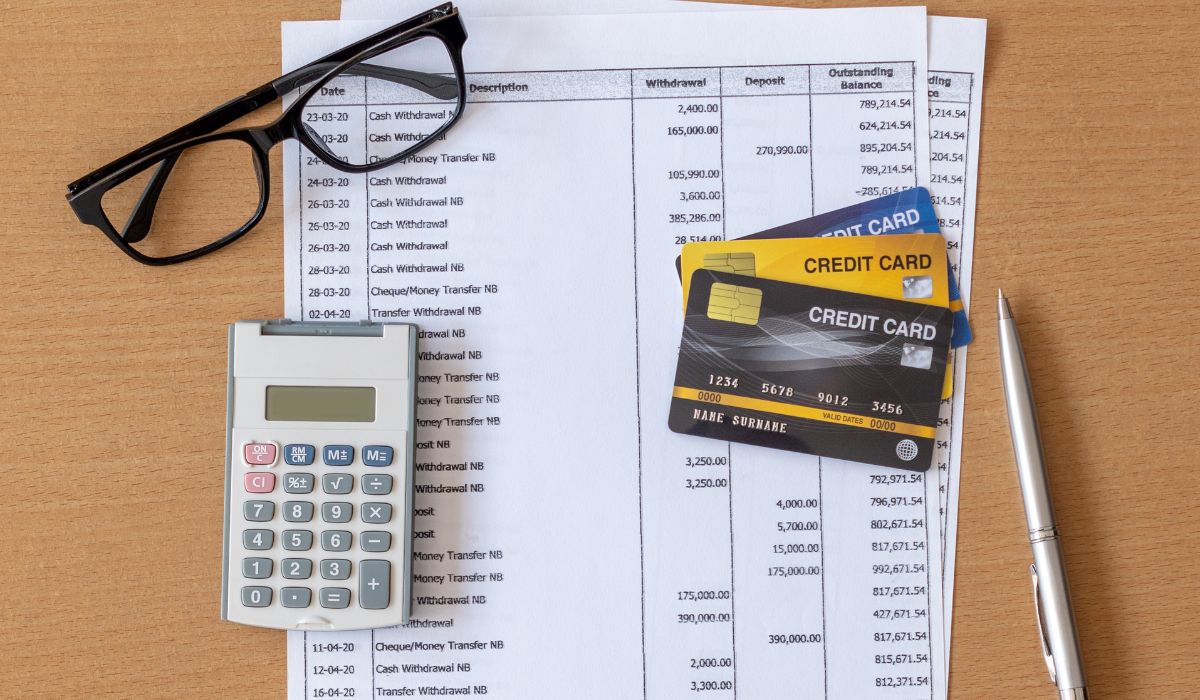How to Apply for a Credit Card: A Step-by-Step Guide
1 min read
Applying for a credit card is an important step in managing your finances, building credit, and accessing a variety of financial benefits. This guide will walk you through everything you need to know, from choosing the right credit card to submitting your application and understanding the approval process.
What are Credit Cards?

Credit cards are financial tools that allow you to borrow money for purchases, up to a certain limit, while offering features like rewards, cashback, or travel perks. Choosing the right type of card depends on your needs and financial situation.
Some common types of credit cards:
- Secured Credit Cards: Ideal for building or repairing credit, requiring a deposit.
- Unsecured Credit Cards: Standard cards that don’t require a deposit, based on your credit score.
- Rewards Cards: Provide points, cashback, or travel benefits on purchases.
- Student Cards: Designed for students with limited credit history.
- Business Cards: Tailored for business-related expenses and rewards.
Understanding these options helps you find a card that matches your lifestyle.
Eligibility Criteria for Credit Card Applications

Before applying, ensure you meet the eligibility requirements set by credit card issuers. These factors play a key role in the approval process.
1. Credit Score Requirements
Your credit score indicates your creditworthiness:
- Good to Excellent Credit (670–850): Access to premium cards with high limits and rewards.
- Fair Credit (580–669): Eligibility for standard cards with moderate benefits.
- Poor Credit (<580): Secured cards may be your best option.
2. Income and Age Requirements
- Proof of a steady income to demonstrate your ability to repay.
- Applicants must typically be at least 18 years old.
3. Other Factors
- Employment status and debt-to-income ratio.
- A clean credit history free from recent defaults or bankruptcies.
Meeting these criteria increases your chances of approval.
Documents You’ll Need to Apply for a Credit Card

Having the right documents ready speeds up the application process. You’ll likely need:
- Government-Issued ID: Driver’s license or passport.
- Proof of Income: Pay stubs, tax returns, or bank statements.
- Address Verification: Utility bills or rental agreements.
- Social Security Number: For identity verification and credit checks.
Ensure all information is accurate and up-to-date.
Where to Apply for a Credit Card
You have several convenient options when applying for a credit card, each suited to different preferences and needs.
1. Online Applications
Most credit card issuers offer online applications through their official websites. This method allows you to:
- Browse and compare available cards.
- Complete an application form from the comfort of your home.
- Upload the required documents directly and submit the form.
2. In-Person Applications
If you prefer face-to-face assistance, visiting a local bank branch is a great choice. At the branch, you can:
- Receive personalized guidance on choosing a card.
- Submit your application and verify documents on the spot.
3. Through Comparison Sites
Third-party comparison platforms are useful for evaluating multiple cards. These sites let you:
- Compare features, fees, and benefits of various cards side by side.
- Apply directly through the platform or be redirected to the issuer’s application portal.
Each of these methods offers a straightforward way to start your credit card application process, ensuring convenience and clarity.
How to Apply for a Credit Card?

Applying for a credit card can be a straightforward process if you follow the right steps. Here’s a detailed guide to ensure a smooth application experience:
1. Research Your Options
Before applying, take the time to compare different credit cards to find one that matches your financial needs and goals. Consider factors like:
- Card Type: Choose between secured, unsecured, rewards, or student cards based on your credit history and needs.
- Fees and Interest Rates: Look for annual fees, late payment charges, and the card’s Annual Percentage Rate (APR).
- Rewards and Benefits: Determine if the card offers cashback, travel rewards, or other perks that align with your spending habits.
Research helps you select a card that maximizes benefits while minimizing costs.
2. Fill Out the Application Form
Once you’ve chosen a card, complete the application form accurately. Be prepared to provide:
- Personal Details: Full name, date of birth, and Social Security number.
- Employment Information: Job title, employer name, and length of employment.
- Financial Details: Monthly income, rent or mortgage payments, and other expenses.
Make sure all information is correct to avoid delays or rejection. Most applications also include questions about your financial responsibilities, such as outstanding debts.
3. Submit Supporting Documents
Supporting documents are critical for verifying the details in your application. Depending on the issuer, you may need to provide:
- Proof of Identity: A government-issued ID, like a driver’s license or passport.
- Proof of Income: Recent pay stubs, tax returns, or bank statements.
- Address Verification: Utility bills or a lease agreement showing your current address.
For online applications, you can upload scanned copies. If you’re applying in person, bring original documents or photocopies as required.
4. Wait for Approval
After submitting your application and documents, the issuer will review your information. This process involves:
- Credit Check: The issuer will assess your credit score and history to evaluate your creditworthiness.
- Verification: They may contact you or your employer to confirm the details provided.
Approval timelines vary:
- Instant Approval: Some online applications provide immediate decisions.
- Standard Processing: Most applications are reviewed within a few business days.
- Additional Review: If more information is needed, the issuer may request further documentation, which could extend the timeline.
Once approved, you’ll receive your credit card in the mail, along with instructions on activation and terms of use.
Factors That Impact Approval
Your credit card application is assessed based on several factors:
- Credit History: Lenders review your repayment history and credit score.
- Debt-to-Income Ratio: A high ratio may reduce your chances of approval.
- Employment Stability: Consistent income reassures issuers of your ability to repay.
Knowing these factors can help you prepare a stronger application.
Understanding Credit Card Terms and Conditions
Before accepting a credit card, it’s essential to carefully review its terms and conditions to ensure it aligns with your financial needs and habits. A clear understanding of these terms can help you avoid unexpected costs and maximize the card’s benefits.
One of the most important factors to consider is the Annual Percentage Rate (APR). The APR represents the interest rate applied to unpaid balances on your card. If you plan to carry a balance, look for a card with a lower APR to reduce the cost of borrowing.
You should also evaluate the card’s fees. Many credit cards charge an annual fee for ownership, while others may include penalties for late payments or foreign transaction fees when you use the card abroad. Be sure to understand these charges to avoid unnecessary expenses.
Additionally, consider the rewards and benefits offered by the card. Some cards provide cashback, travel perks, or points systems that can be redeemed for merchandise or services. Choose a card with rewards that match your spending habits to maximize its value. For example, if you frequently travel, a card with airline miles or hotel rewards may be a better fit than a general cashback card.
By thoroughly understanding these terms, you can choose a credit card that complements your financial goals and spending patterns.
What to Do After Approval
Once your credit card is approved, take these steps:
- Activate Your Card
Follow instructions from the issuer to activate it for use. - Set Up Online Account Management
Use the issuer’s website or app to track your spending and payments. - Understand Your Credit Limit
Avoid maxing out your limit to maintain a healthy credit utilization ratio.
Responsible usage is key to building and maintaining good credit.
Conclusion
Applying for a credit card involves careful research, preparation, and understanding of the terms. By following this guide, you can select the right card for your needs and submit a strong application.



